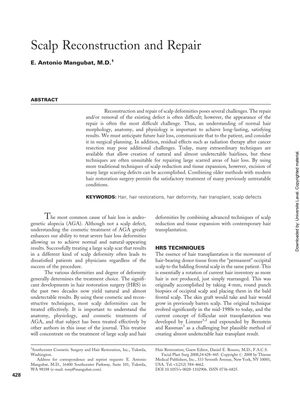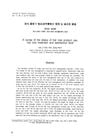Scalp Reconstruction and Repair
November 2008
in “
Facial Plastic Surgery
”

TLDR Effective scalp reconstruction requires a wide range of surgical skills and an understanding of hair biology.
In the 2008 article, E. Antonio Mangubat, M.D., discussed the complexities of scalp reconstruction and repair, focusing on the importance of understanding hair biology and anticipating future hair loss in surgical planning. Techniques such as scalp reduction, tissue expansion, and modern hair restoration surgery (HRS), including follicular unit transplantation, were described. The success of these procedures depends on various factors, including hair loss extent, patient characteristics, and hair properties. Case studies highlighted the use of tissue expansion, which involves stretching the skin to repair scalp defects, and the necessity of combining different surgical techniques for effective treatment. Challenges such as patient trust, scar tissue rigidity, and the potential for future HRS in androgenetic alopecia cases were also discussed. The article concluded that a broad skill set in HRS, cosmetic, and reconstructive surgery is essential for superior outcomes in treating scalp deformities.

